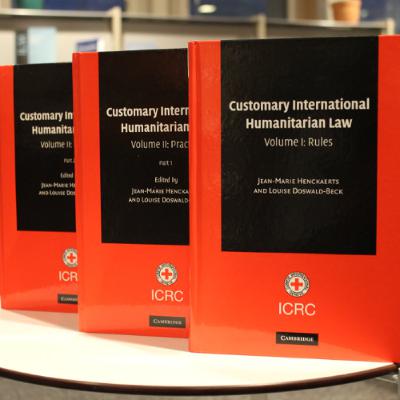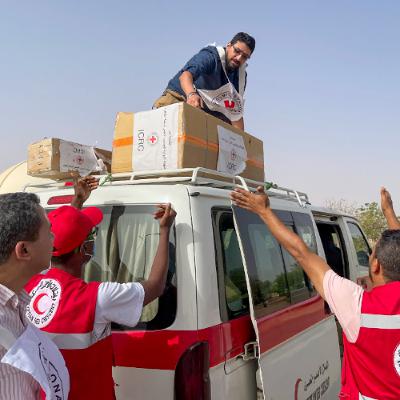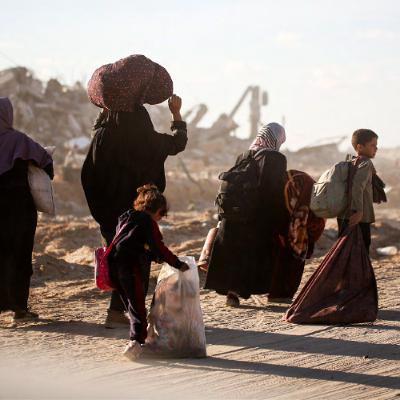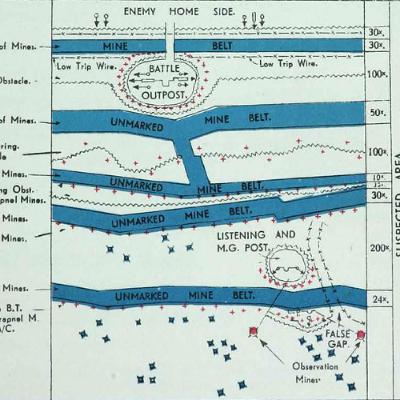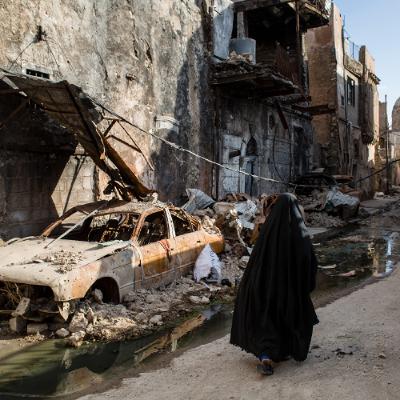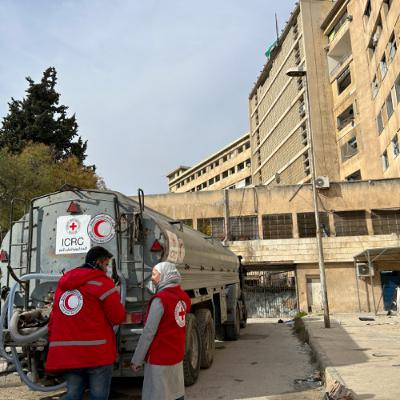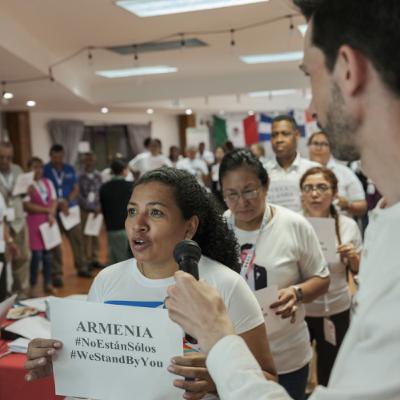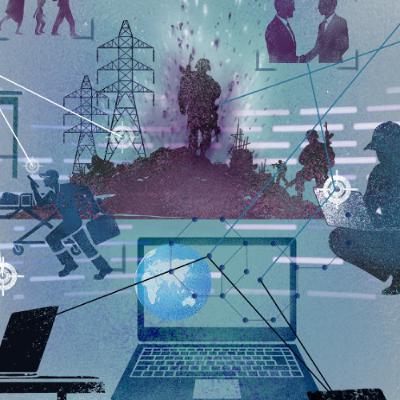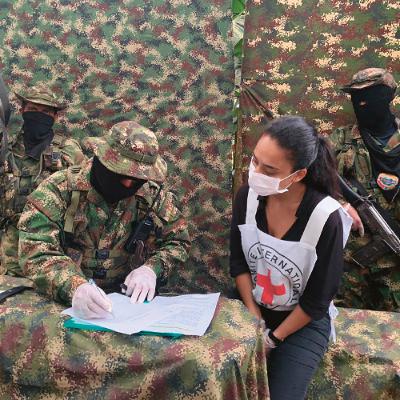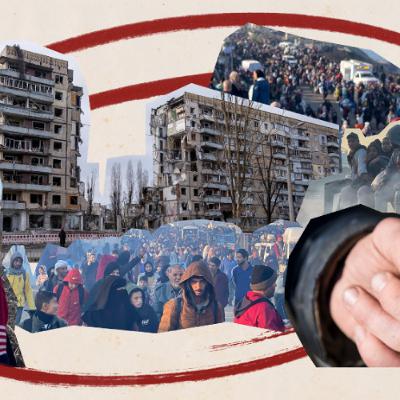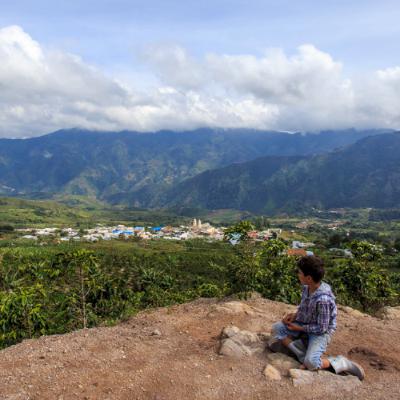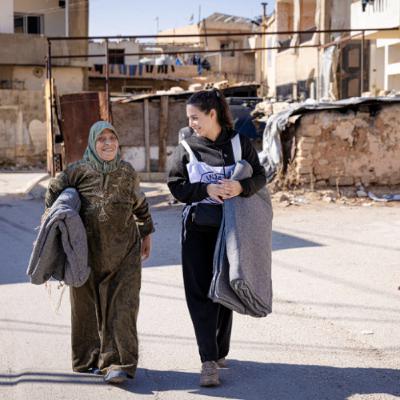Discover ICRC Humanitarian Law and Policy Blog
ICRC Humanitarian Law and Policy Blog

ICRC Humanitarian Law and Policy Blog
Author: ICRC Law and Policy
Subscribed: 117Played: 2,836Subscribe
Share
© All rights reserved
Description
The International Committee of the Red Cross (ICRC) Humanitarian Law & Policy blog is a unique space for timely analysis and debate on international humanitarian law (IHL) issues and the policies that shape humanitarian action.
270 Episodes
Reverse
The ICRC’s 2005 study on customary international humanitarian law – along with the free, public database launched five years later – arrived at a moment when the legal landscape of armed conflict was rapidly shifting. Mandated by the 26th International Conference of the Red Cross and Red Crescent, the study set out to map the customary rules governing contemporary warfare by systematically analyzing global state practice and opinio juris. Twenty years on, with more than 130 armed conflicts active worldwide, reassessing the study’s methodological contributions, its evidence base, and its impact on the regulation of both international and non-international armed conflicts offers a timely lens on how customary IHL continues to underpin protections for people affected by war.
In this post, ICRC Legal Adviser Claudia Maritano and members of the British Red Cross-ICRC customary IHL research team reflect on how the study’s rigorous methodology, global scope, and identification of 161 customary rules helped clarify gaps left by treaties, especially in non-international armed conflicts, and strengthen the practical application of IHL.
Large-scale armed conflicts consistently sever the systems that sustain civilian life, leaving populations without essential services or access to basic goods. International humanitarian law (IHL) sets out clear obligations for states to anticipate these foreseeable humanitarian needs and to ensure that impartial relief can reach affected communities swiftly and safely. Yet from customs hurdles to restrictive regulatory frameworks, many of the barriers to life-saving assistance are rooted not in conflict itself, but in peacetime choices.
In this post, ICRC Legal Adviser Ellen Policinski examines how states can proactively shape legal, administrative, and logistical systems that enable, rather than obstruct, humanitarian relief in moments of crisis. She underscores that meeting IHL obligations requires advance preparation – from easing import restrictions to ensuring postal and customs exemptions – so that when conflict erupts, assistance can move without avoidable delay.
The environmental toll of armed conflict is neither insignificant nor fleeting: it contaminates water, soil, and air, erodes ecosystems, undermines livelihoods, and burdens public health long after the fighting stops. The damage both mirrors and magnifies humanitarian crises, from Gaza’s mountains of debris to Ukraine’s flood-borne pollutants, to Sudan’s industrial contamination. Compounded by the impacts of the climate crisis, these environmental challenges only deepen the vulnerabilities of those affected by conflict. Understanding and addressing the interwoven impacts of conflict and the environment is essential for global climate, nature, pollution and sustainable development efforts, and to ensure that people can live and thrive in a healthy, secure and resilient environment.
In this post, part of the War, Law and the Environment series, the UNEP Disasters and Conflicts Branch reflects on its decades of work helping countries address these challenges, charting a path from emergency response to long-term recovery. Through science-based assessments, practical guidance, and strategic partnerships, UNEP is equipping states to address the toxic legacies of war, restore ecosystems, and build resilience into the reconstruction process. Recent UN resolutions, including UNEA’s 2024 consensus decision, underscore growing political recognition that protecting the environment in armed conflict is integral to peace and recovery. What emerges is a vision of environmental response not as an afterthought to war, but as a cornerstone of recovery, and an entry point to build back greener, fairer, and stronger in the shadow of destruction.
Five States Parties to the Anti-Personnel Mine Ban Convention have recently submitted instruments of withdrawal, citing national security and military necessity, while at least one other has taken steps to “suspend” the Convention. These developments raise important questions about whether anti-personnel mines retain any meaningful military utility in contemporary conflict.
In this post, Erik Tollefsen, Head of the ICRC Weapon Contamination Unit and Pete Evans, Head of the ICRC Unit for Arms Carriers and Prevention examine this question from an operational perspective. They argue that advances in technology and the realities of modern warfare have significantly reduced the military relevance of anti-personnel mines, while their humanitarian consequences remain severe. They outline why some of the most frequently cited justifications – border security, the supposed benefits of “smart” mines, or perceived low cost – no longer withstand scrutiny, and why renewed interest in these weapons risks reversing decades of progress. The authors call on states to base decisions on rigorous, transparent assessments of current military relevance weighed against humanitarian and legal obligations. In a security environment defined by rapid innovation, they conclude that, now as at the Convention’s adoption 30 years ago, anti-personnel mines have no place on the modern battlefield – and that reaffirming the norm against their use is more urgent than ever.
More than 200 million people live today in contested territories – places where the authority of the state is challenged outright and armed groups exercise full or fluid control. This number has risen by 30 million since 2021. These are not distant statistics; each figure represents a person living in the shadow of competing powers, making difficult choices in an almost impossible environment.
How do people navigate the presence of multiple, often competing, armed actors? Is dignity found in defiance, or safety in uneasy compliance? How do families secure food, water or medical care when neither the state nor armed groups are able or willing to provide basic services? And, crucially, what can humanitarian actors do to better protect and assist those caught in these fractured landscapes?
In this post, and drawing on recently published research in Cameroon, Iraq and the Philippines, Arjun Claire, Senior Policy Adviser at the ICRC, and Matthew Bamber-Zryd, the ICRC’s Adviser on Armed Groups, offer five insights to help strengthen humanitarian responses in contested territories – insights rooted in the lived realities of the people who navigate them every day.
Restrictions on movement and access to medical supplies have become an often-unseen threat to health care in today’s armed conflicts. Even where hospitals are not attacked, the quiet tightening of supply routes can deprive them of the medicines, equipment, and basic services they need to function.
In this post, ICRC Legal Advisers Supriya Rao and Alexander Breitegger outline what the obligation to protect medical facilities means in practice, from allowing the passage of medical consignments to enabling essential services like power and water. They also describe how concerns about dual-use risks must be balanced against humanitarian needs, and highlight ongoing work under the Global IHL Initiative to identify good practices that help keep hospitals operating even in the most difficult conditions.
As artificial intelligence (AI) begins to shape decisions about who is detained in armed conflict and how detention facilities are managed, questions once reserved for science fiction are now urgent matters of law and ethics. The drive to harness data and optimize efficiency risks displacing human judgment from one of the most sensitive areas of warfare: deprivation of liberty. In doing so, AI could strip detainees of what remains of their humanity, reducing them to data points and undermining the core humanitarian guarantees that the Geneva Conventions were designed to protect.
In this post, Terry Hackett, ICRC’s Head of the Persons Deprived of Liberty Unit, and Alexis Comninos, ICRC’s Thematic Legal Adviser, explore how the use of AI in detention operations intersects with international humanitarian law (IHL), and why humane treatment must remain a human-centered endeavor. Drawing on the ICRC’s recent recommendations to the UN Secretary-General, they argue that while IHL does not oppose innovation, it sets the moral and legal boundaries that ensure technological progress does not come at the cost of human dignity.
When people go missing in war, their absence lingers far beyond the battlefield – splintering families, deepening social divides, and haunting political transitions. Yet amid this grief, the families of the missing often become unlikely peacebuilders: their search for truth draws them across old front lines, transforming pain into connection and personal loss into a collective force for reconciliation.
In this post, Jill Stockwell, Simon Robins, and Martina Zaccaro explore how families of the missing – through shared advocacy and dialogue – can reshape divided societies. Drawing on ICRC research from Bosnia and Herzegovina, Cyprus, and Nepal, they show how families who once faced each other as enemies now work side by side, using their moral authority and lived experience to foster empathy, resist manipulation, and model the very reconciliation peace processes often fail to achieve.
When wars end, peace rarely begins overnight. It’s built, slowly and painstakingly, through acts that restore a sense of humanity where it was once suspended. Among these, how a society treats people it detains may seem peripheral, yet it can determine whether trust survives long enough for peace to take root. Humane detention, often overshadowed by more visible aspects of conflict recovery, is in fact one of the earliest and most concrete tests of readiness for peace. Each act of respect for law and dignity – registering a detainee, allowing a family visit, providing medical care, or releasing a prisoner when the reason for detention has ceased – helps reduce the harm that fuels revenge and instead preserves the fragile threads of trust that can bind divided societies.
In this post, Terry Hackett, ICRC’s Head of the Persons Deprived of Liberty Unit, and Audrey Purcell-O’Dwyer, ICRC’s Legal Adviser with the Global Initiative on IHL, show how compliance with international humanitarian law (IHL) in detention – while not a direct path to peace – can serve as a legal and moral bridge towards it, one rooted in dignity, accountability, and the quiet rebuilding of trust. By limiting suffering and safeguarding dignity, it helps prevent conflicts from eroding the institutions and confidence that societies need to recover.
Picture a potential future armed conflict: missiles and drones crowding the skies, uncrewed vehicles rolling across borders, and governments scrambling to coordinate their defences. Their conclusion: Every citizen is needed. Some collect and relay information about the approaching enemy into an artificial intelligence (AI) platform that supports military decision-making. Reservists join the ranks of the armed forces. Computer experts choose to contribute by conducting cyber operations aimed at disrupting military operations, sowing chaos among the civilian population, and harming the enemy’s economy. As the militaries on both sides rely heavily on digital communication, connectivity, and AI, the armed forces call on tech companies to provide cybersecurity services, computing power and digital communication networks.
In this post, Tilman Rodenhäuser, Samit D’Cunha, and Laurent Gisel from the ICRC, Anna Rosalie Greipl from the Academy, and Professor Marco Roscini from the University of Westminster (and former Swiss IHL Chair at the Geneva Academy) present five key risks for civilians, along with the obligations of both civilians and states, related to the involvement of civilians in information and communication technology (ICT) activities in armed conflict.
In line with its mandate, the ICRC engages with all parties to an armed conflict, including non-state armed groups. The ICRC has a long history of confidential humanitarian engagement with armed groups to alleviate and prevent the suffering of persons living in areas controlled by these groups. However, this engagement has become increasingly complex. Accordingly, the ICRC undertakes an annual internal exercise to evaluate the status of its relationships with armed groups and to identify developments to strengthen its future engagement worldwide.
In this post, ICRC Adviser Matthew Bamber-Zryd discusses key findings from the 2025 exercise. The ICRC estimates that 204 million people live in areas controlled or contested by armed groups. In 2025, there were more than 380 armed groups of humanitarian concern. A key development in 2025 is the ICRC's deepened engagement with non-state armed groups that are parties to armed conflict and bound by international humanitarian law (IHL), achieving significantly higher contact rates with these groups than with other armed actors. Yet engagement remains constrained by three major obstacles: deteriorating security conditions, operational constraints including limited resources and competing priorities, and state-imposed barriers, notably counter-terrorism legislation.
The law of naval warfare is a complex collection of international laws, developed in an era that could not anticipate today’s global interdependence, the scale of maritime trade, or the nature of modern maritime conflict. Recent attacks on civilian shipping and ports have underscored the significant humanitarian consequences for seafarers and the global community of states who are heavily dependent on open and secure sea lines of communication. While the existing legal framework – partly codified in the late 19th and early 20th centuries and supplemented by later conventions – remains robust, it was conceived for a different maritime world. Proactive, inclusive dialogue among states is urgently needed to identify and address legal implementation challenges and protection gaps.
In this post and through the naval warfare workstream of the Global IHL Initiative, ICRC Legal Advisers André Smit and Kelisiana Thynne outline the international community’s reflections, ideas and recommendations for protecting civilian lives and livelihoods affected by naval operations in an era of heightened geopolitical tension at sea.
This year marks the 60th anniversary of the Fundamental Principles of the Red Cross and Red Crescent Movement – humanity, impartiality, neutrality, independence, voluntary service, unity and universality. Proclaimed in Vienna in 1965, they were born not as abstract ideals but as the direct result of over a hundred years of humanitarian action. They have enabled aid to cross frontlines, families to be reunited, and hope to reach places of despair. Yet today, the world in which they must operate is under extraordinary strain: conflicts drag on for years, humanitarian workers face record levels of attack, climate shocks compound existing crises, digitalization reshapes the battlefield, and politicization erodes the fragile space where help can reach those who need it most. The human consequences of war remain devastatingly constant, and the Principles- that have guided the Movement since 1965 are under growing pressure.
In this post, ICRC’s Director General Pierre Krähenbühl reflects on the enduring relevance and importance of the Fundamental Principles in a rapidly shifting world. He argues that they are not self-sustaining ideals to be admired from afar, but living commitments that must be exercised and defended. Drawing on his three decades of humanitarian work, he makes the case that the Principles resist the dangerous normalization of war, safeguard access to people in need, and fuel the courage necessary to channel indignation into lifesaving action. At sixty, the Principles will only remain vital if we choose to live them, and in so doing, keep humanity alive in the darkest of times.
Following five years of research and consultations, the ICRC has published a new, updated Commentary on the Fourth Geneva Convention (GC IV) of 1949. GC IV is the cornerstone of protection for civilians in international armed conflict and occupation – protections that remain urgently relevant amid patterns of urban warfare, strikes on essential services, and persistent harm to people who are not, or are no longer, taking part in hostilities. The 2025 Commentary consolidates seven decades of practice, jurisprudence, and operational experience into a practical guide to applying GC IV’s safeguards effectively today.
In this post, Jean-Marie Henckaerts, the head of the ICRC project to update the Commentaries on the Geneva Conventions of 1949 and their Additional Protocols of 1977, situates the updated Commentary in contemporary conflict realities and explains why GC IV’s protective purpose must steer its interpretation. He argues that good faith interpretation – required by the Vienna Convention on the Law of Treaties – means reading GC IV in a way that realizes its humanitarian object and purpose, not hollowing it out through technical argumentation that defeats protection in practice.
The impact of armed conflict on mental health is increasingly evident. According to data from the World Health Organization, one in five people who have experienced armed conflict in the last ten years suffers from some form of mental health condition. With an estimated two billion people living in places affected by war, the scale of the problem is staggering. Yet, despite its magnitude, the legal protection of mental health during hostilities remains largely overlooked by both academics and practitioners.
In this post, part of the Emerging Voices series, Giulia Bosi, Postdoctoral Researcher in International Law at Scuola Superiore Sant’Anna in Pisa, Italy, examines whether and how international humanitarian law (IHL) seeks to safeguard mental health. Her analysis shows that the drafters of IHL treaties were, at least to some extent, aware of the importance of mental health, that several IHL norms aim to protect it, and that the growing recognition of mental health as an integral part of health is shaping contemporary interpretations of IHL.
For groups involved in long-running non-international armed conflicts, the decision to end the use of violence poses significant challenges – even when it is no longer recognized to be an “effective” means of achieving organizational objectives.
In this post, independent researcher Dr Thomas Evans argues that exploring the cultural perspectives, influences, and identities within non-state armed groups and their members is vital to understanding the continued usage of, and disengagement from, political violence.
The number of conflicts continues to rise – with the ICRC currently classifying some 130 armed conflicts worldwide – while at the same time, they are rarely brought to an end. The human suffering they cause is devastating and hard to comprehend. But wars are not inevitable – and the best way to end the suffering they cause is to end conflicts or prevent them from breaking out in the first place. In the absence of effective efforts to find sustainable political solutions, humanitarian organizations like the ICRC are often left to manage the suffering caused by these conflicts, which affect civilians most of all. Political will to reinvest in international cooperation, conflict prevention, and resolution is urgently needed. While humanitarian action cannot substitute for political action, humanitarian actors can contribute to the prospects for peace.
In this post, ICRC Policy Advisers Ariana Lopes Morey and Avigail Shai outline key reflections on the ICRC’s direct and indirect contributions to an environment conducive to peace. Drawing on case studies and other research, they identify three primary areas of the ICRC’s humanitarian action – its work with communities, in dialogue with parties to conflict and other influential actors, and in building respect for human dignity through laws, norms and institutions – which can strengthen prospects for peace. While focused on the ICRC’s own work, many of these reflections can apply more broadly to other organizations who strive to address the humanitarian impacts of conflict on people.
Across contemporary armed conflicts, the presence of civilian groups who take up arms to defend their communities raises enduring and complex legal challenges. At what point do these groups become parties to an armed conflict or otherwise bound by IHL? Do civilians who participate in hostilities lose protection against attack, and if so, for how long? Who bears responsibility for ensuring that they, and other civilians drawn into conflict, respect IHL?
In this post, ICRC Legal Advisers Jelena Nikolic, Tilman Rodenhäuser and Thomas de Saint Maurice examine these questions in the context of non-international armed conflicts, seeking to help in the analysis of determining whether and at what point groups of civilians become parties to armed conflicts, what their legal obligations are, and who is responsible for their conduct.
For as long as humans have existed, stories have been our bridge to one another. Today, in a world shaped by digital networks, synthetic media, and hyperconnected feeds, that bridge is under unprecedented strain. Storytelling remains one of the most powerful ways to counter division and remind us of our shared humanity, yet it is also increasingly manipulated, dismissed, or drowned out in a noisy and polarized information landscape. The risk is not simply losing narratives but losing the very empathy and recognition that underpin humanitarian action.
In this post, ICRC Communications Coordinator Najum Ul Saqib Iqbal argues that in an age of competing truths and rising dehumanization, telling stories of dignity and resilience is not a luxury but a moral necessity, an act of resistance against apathy, and a vital means of reconnecting us across divides.
The waters stretching from the Eastern Indian Ocean through Southeast and East Asia to the Western Pacific sustain global trade, host abundant marine resources vital to the livelihoods of many, and power regional economies. They are central to the national security of many states and are also home to major powers, vast archipelagic states, and many smaller states, including small island nations. These waters are also marked by overlapping maritime claims, strategic maritime chokepoints, and a growing military presence, including states from outside the region. Tensions rise when maritime incidents occur and there is an ever-present risk of miscalculations spiraling into broader confrontations.
While armed conflict is not inevitable, if it were to occur it would likely unfold with considerable intensity, scale and tempo, with far-reaching and severe humanitarian consequences. Preparing for such a scenario requires not only preventing escalation but also ensuring that humanitarian impacts are mitigated and that impartial humanitarian action can take place, even in complex maritime environments where neutral states would also be called upon to shoulder important responsibilities.
In this post, part of the “Complying with IHL in large-scale conflict” series, ICRC Legal Advisers Ansha Krishnan and Eve Massingham explore some of the humanitarian challenges posed by potential large-scale conflict in the Asia-Pacific region. The maritime nature of the region, together with its vast geographical scope and the present geo-political realities means aspects of conflict preparedness bear specific consideration because of the practical measures required to comply with IHL obligations and prepare for likely humanitarian consequences.


